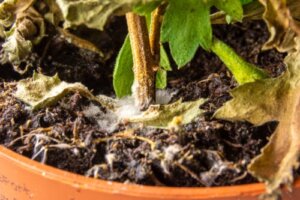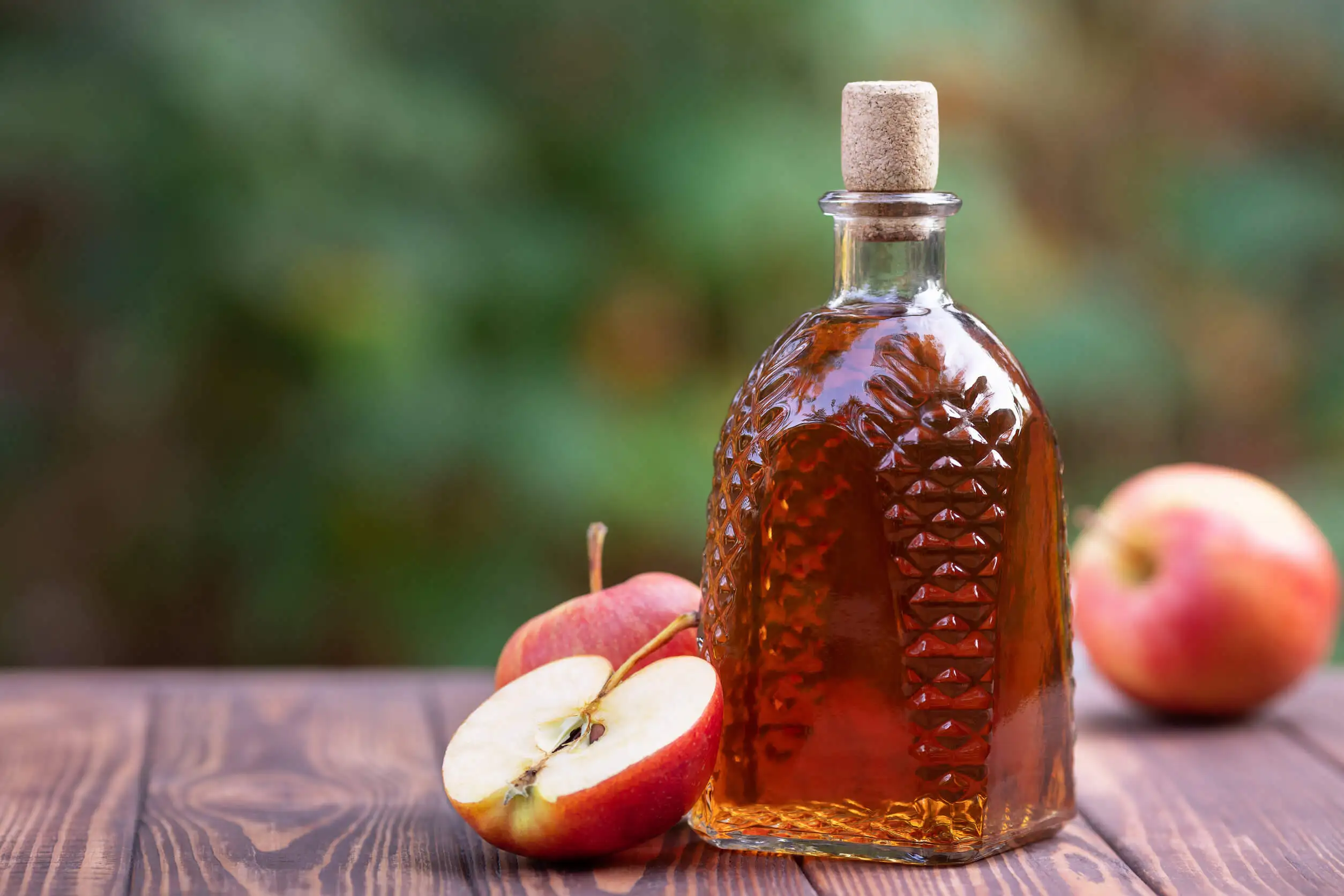How to Remove White Mold in The Soil From Plants

It’s common for white spots to appear in the soil of your plants. If you’ve noticed that a kind of fluffy white fuzz has settled near the roots, it’s most likely that white mold has developed. This can happen with outdoor or indoor plants, but’s more likely to occur in the latter case.
White mold should be removed as soon as possible since it’s harmful for the plant and also for the home environment in general. It affects the vegetation in different ways by passing through the leaves, the substrate, and even the entire pot.
What is white mold and why is it generated?
First of all, it should be noted that a minimal amount of white fluff is normal and does not represent damage to the health of the plants. This white fluff is a fungus or white mold that appears due to high ambient temperature and high humidity.
However, its presence is also part of the organic substrate of the soil, as well as other bacteria. Therefore, the problem appears when there’s an excess of white mold in the pot.
In that case, immediate action must be taken to remove it, as it can damage the plant. In addition, it can spread rapidly to other vegetation and can negatively influence people’s health.
How can it be prevented?
As in many other aspects, the best possible treatment is prevention. For this reason, knowing the possible causes that favor the generation of white mold helps to prevent it.
The specific reasons may be some of the following:
- Proximity to heating: Plants should be kept away from the heat transmitted by fireplaces, heaters, or stoves.
- Excessive or insufficient watering: One of the typical causes of the appearance of fungi is accumulated humidity. This is sometimes caused by excessive watering.
- Poor ventilation in the environment is a frequent problem for indoor plants. If you have a garden, it’s advisable to air out the plants for a few hours a day.
- Poor drainage: As far as water is concerned, it’s also possible that the pot does not have good drainage. This can be solved by placing gravel or small stones at the base.
- An excess of debris: Part of taking care of the plants is to remove fallen leaves from the pot. Although they don’t generate problems in small quantities, an excess can favor the production of white mold.

We think you may also enjoy reading this article: How to Use Neem Oil to Look After Your Garden Plants
How to eliminate white mold
Ending this problem that affects the health of your plants is a simple task, but it depends on the sector where the white mold is generated. It’s not the same if it ‘ in the soil, on the leaves, or in the pot. For each area, it’s recommended to take different actions. Let’s take a closer look.
White mold on the leaves
One of the parts of the plant where this fungus can appear is on the leaves. This is a simple area to cure, since it’s enough to wipe with a soft, dry cloth to remove the stains. If this is not enough, it’s a good idea to get specific products to remove it.
They should be obtained in specialized stores and must be aimed at the problem of white mold on the leaves. Ecological fungicides are effective and environmentally friendly. However, they should always be applied with caution and through a sprayer.
Mold in the soil
Perhaps the most common space where the fluff usually appears is in the soil of the pot. In this case, the affected layer should be removed with a small shovel. When the fungal layer is no longer on the soil, move the soil around a little to aerate it and remove moisture.
It is important to do this with great caution not to affect the roots or contaminate the rest of the pot. Before placing a new layer of compost, let the plant air out for a few hours.
White mold in the pot
The most serious case occurs when the amount of fungus is so large that it affects the entire plant, and even its pot. In this case, it’s advisable to transplant it – that is, to change the pot. However, if it’s a valued pot, it’s also possible to save it by disinfecting and renewing the soil.
This must be done in a specific and detailed way so that it’s safe and doesn’t affect the health of your plant again. The first step is to remove it and remove the soil infected with white mold. At the same time, wash the pot well with warm water and neutral soap.
It’s also advisable to add a few drops of apple cider vinegar or a pinch of baking soda. These are products that provide disinfectant properties.
Then, rub the pot with a cloth or brush to remove the remains of bacteria. Also do this on its external face. Finally, rinse it well and let it dry in the sun for a few hours.

Like this article? You may also like to read: How to Use Recycled Glass Bottles to Decorate your Garden
Identify white mold in time
Although a small layer of this fungus does not harm the health of your plant, it’s important to check it on a weekly basis. White mold detected early is not a major problem, but if left there, it can spread rapidly and damage other nearby plants.
If the whitish coating is dry and brittle, it’s likely to be leftover salts that the plant discards from the water. In this case, they can be easily removed by hand.
All cited sources were thoroughly reviewed by our team to ensure their quality, reliability, currency, and validity. The bibliography of this article was considered reliable and of academic or scientific accuracy.
- Ayala Armenta QA, Cortez Mondaca E, Apodaca Sánchez MA, Leal León VM, Valenzuela Escoboza FA, Palacios Mondaca CA. Efectividad de fungicidas convencionales y biorracionales sobre Sclerotinia sclerotiorum in vitro. Remexca [Internet]. 18 de enero de 2018 [citado 23 de abril de 2022];(11):2149-56. Disponible en: https://cienciasagricolas.inifap.gob.mx/index.php/agricolas/article/view/784
- Chaves, Bernardo, Arias, Luis Alejandro, Tautiva, Luz Andrea, Piedrahíta, Wilson, Evaluación de tres métodos de control del Moho blanco (Sclerotinia sclerotiorum (Lib.) de Bary) en lechuga (Lactuca sativa L.). Agronomía Colombiana [Internet]. 2007;25(1):131-141. Recuperado de: https://www.redalyc.org/articulo.oa?id=180316240015
- Valverde, Rodrigo, and Rodolfo De La Torre-Almaraz. “Extracción y Purificación de DsRNAs Largos de Plantas Infectadas Con Virus y Hongos; Aplicación En La Detección e Identificación de Virus.” Revista Mexicana de Fitopatología, Mexican Journal of Phytopathology 35.1 (2017). Disponible en: https://doi.org/10.18781/r.mex.fit.1606-9
- Bautista-Nava, Efraín, Moreno-Fuentes, Ángel, El “hongo blanco patón”, Pleurotus albidus, en Hidalgo. Su primer registro en México. Revista Mexicana de Micología [Internet]. 2006; (22):41-47. Recuperado de: https://www.redalyc.org/articulo.oa?id=88302206
This text is provided for informational purposes only and does not replace consultation with a professional. If in doubt, consult your specialist.








